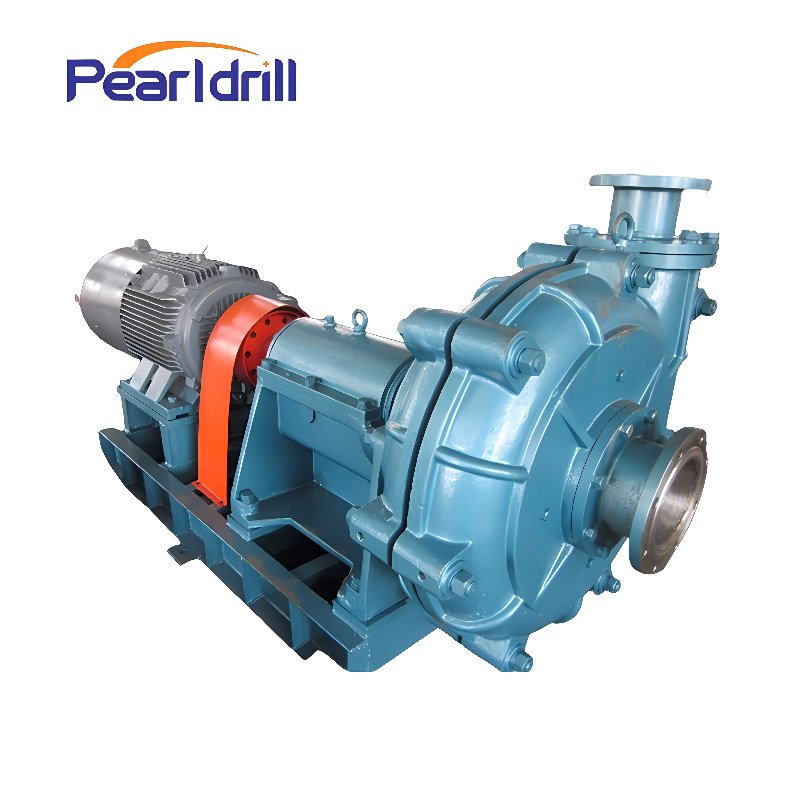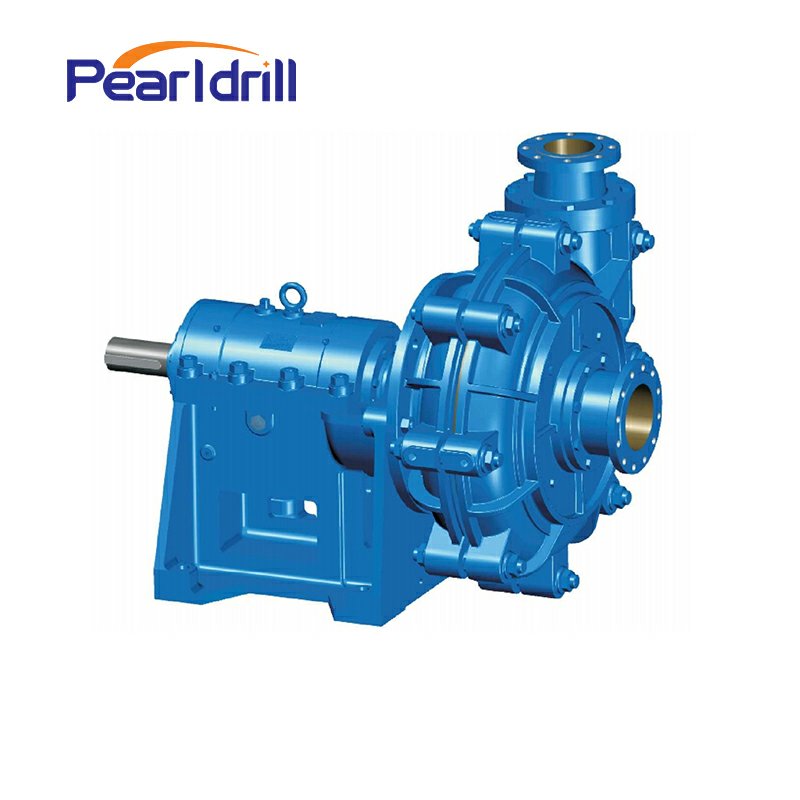The reliability of the double-suction horizontal slurry pump
Double-Suction Horizontal slurry pump is a tough and efficient centrifugal pump specifically made for moving liquids that have solid bits mixed in. Its special double-suction impeller design makes it really good at handling thick, gritty stuff, and you see it used a lot in industries like mining, metal processing, power plants, coal, chemicals, building materials, and even for dredging.

The coolest thing about these pumps is their double-suction impeller, which has some neat advantages:
1. Moves More Stuff: Because it sucks liquid in from both sides, it has a much bigger intake area, so it can pump a larger amount of liquid.
2. Less Likely to Get Cavitation: The double-suction design makes the liquid flow more evenly into the impeller, which reduces low-pressure spots that can cause cavitation. This means the pump can suck better and handle higher suction heights.
3. Less Force on the Shaft: Since the liquid comes in from both sides equally, the forces pushing on the pump's shaft balance each other out. This puts less stress on the bearings, makes them last longer, and makes the pump run smoother.
4. Easy to Work On: Most of these pumps have a horizontally split casing. This makes it easy to take them apart for maintenance and repairs. You don't even have to disconnect the pipes to open it up and check or replace parts.
5. Made to Last: Because they're pumping abrasive stuff, the parts that touch the liquid are usually made from super tough materials like high-chromium alloys, wear-resistant cast iron, or rubber, so the pump lasts longer and costs less to run in the long run.
6. Seals Reliably: Depending on what kind of liquid they are pumping and the conditions, they can use different reliable seals like packing seals, mechanical seals, or expeller seals to prevent leaks.
How it Works:
1. Prime it First: Just like other centrifugal pumps, you usually need to prime it before starting to get rid of any air inside.
2. Impeller Spins: An electric motor turns the pump's shaft, which spins the double-suction impeller really fast.
3. Sucks from Both Sides: As the impeller spins, it creates low pressure at the intake. The liquid then gets sucked into the impeller from both sides because of the pressure difference.
4. Impeller Pumps: The spinning blades of the impeller grab the liquid and fling it outwards, increasing its speed and pressure.
5. Casing Collects and Directs: The volute (the spiral-shaped casing) collects the high-speed liquid coming off the impeller and gradually slows it down, converting some of that speed into even more pressure. Finally, the liquid gets pushed out through the discharge pipe to where it needs to go.
Where You See Them:
1. Mining: Moving ore slurries, concentrates, and tailings in mineral processing plants.
2. Metal Processing: Handling slag and iron oxide scale in steel mills, and various ore slurries and residues in non-ferrous metal smelters.
3. Power Plants: Pumping ash and desulfurization slurries.
4. Coal Industry: Moving coal slurries and waste rock in coal washing plants.
5. Chemical Plants: Transferring all sorts of corrosive or solid-containing chemical mixtures.
6. Building Materials: Pumping raw material slurries and cement slurries in cement factories.
7. Dredging: Moving sand, gravel, and silt in river dredging and land reclamation projects.
8. Environmental: Transferring sludge in wastewater treatment plants.
What to Think About When Choosing One:
1. What You're Pumping: The thickness, particle size, shape, hardness, corrosiveness, and temperature of the slurry all matter. These things will determine what materials the pump needs to be made of and what kind of seals will work.
2. How Much and How Far: You need to figure out the required flow rate (how much liquid needs to be moved) and head (how high or far it needs to be pumped). This is the main thing that determines the pump size and model.
3. Suction Conditions: The length of the suction pipe, the height difference, and the pressure at the liquid surface all play a role. You need to calculate the Net Positive Suction Head Required (NPSHr) and choose a pump with enough suction performance.
4. What It's Made Of: Pick the right materials for the parts that touch the liquid based on how corrosive and abrasive the slurry is to make sure the pump lasts.
5. How It's Sealed: Choose the right type of seal (packing, mechanical, etc.) based on the liquid, pressure, and temperature to prevent leaks.
6. How It's Powered: They are driven by electric motors, so you need to pick the right motor size for the pump's power needs.
7. Running Costs and Ease of Maintenance: Consider how efficient the pump is, how much energy it uses, how easy it is to replace worn parts, and the overall maintenance costs.

Click here to talk to us if you want to know more:
Double-Suction Horizonta Slurry Pump
We're here to help you get the best drilling stuff and service.

